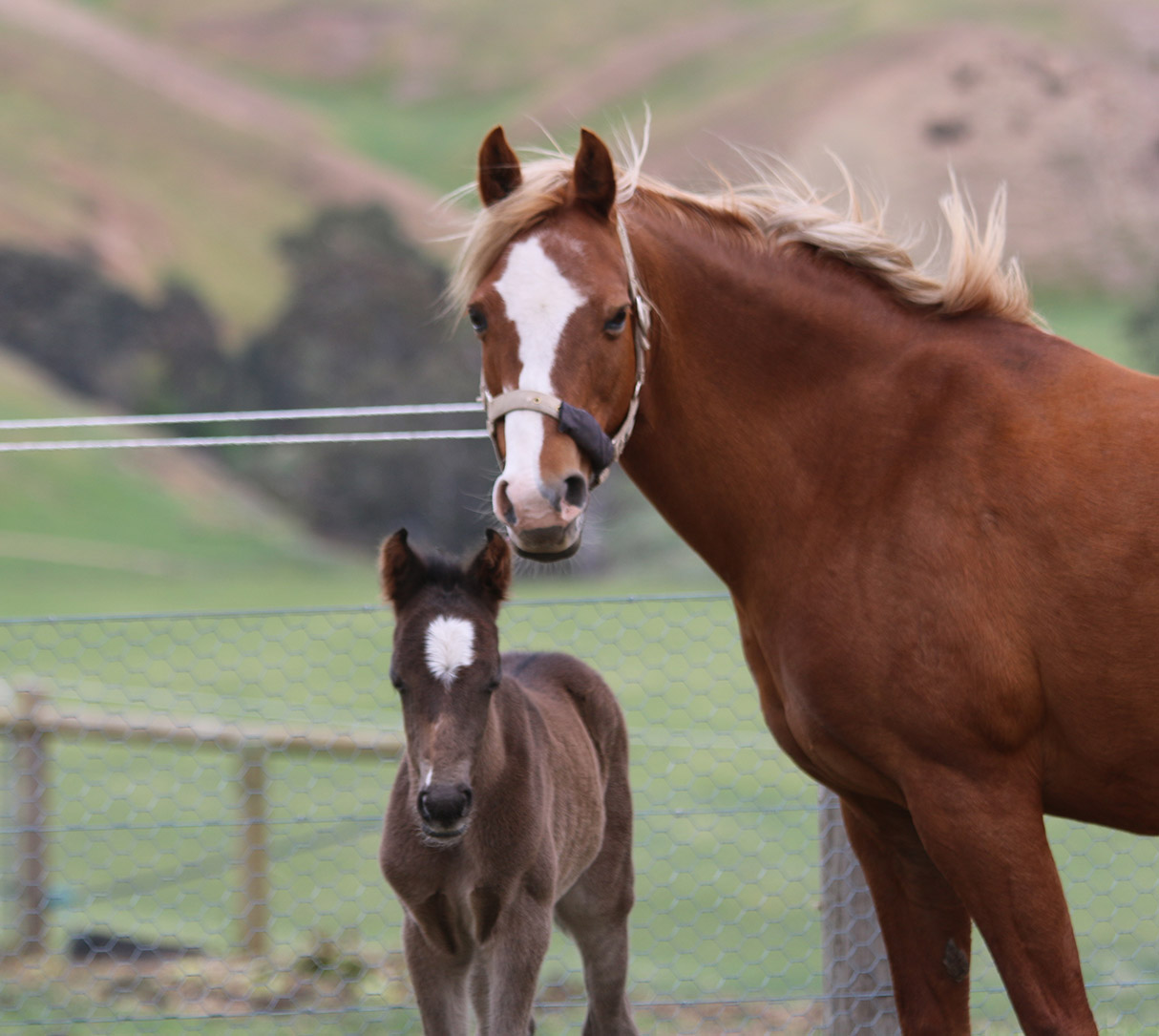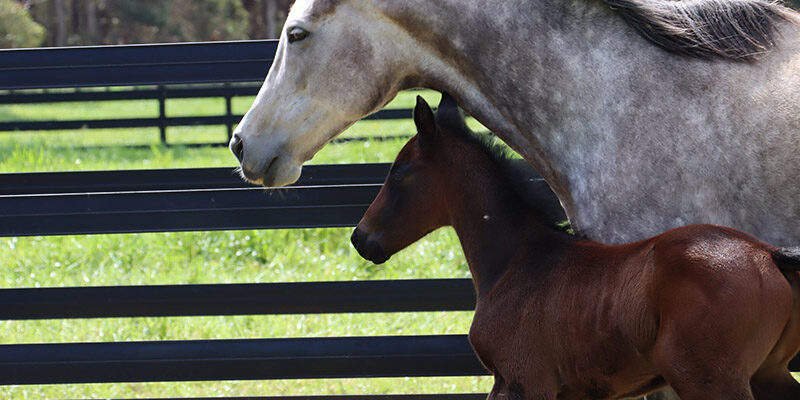
Mesh fencing for foals has been long conceived as being a safe option. But is it really?
Well, it sort of is, but not really. There are many different mesh fencing for foals options on the market. Some are made with soft wire, some with high tensile wire. Some with small holes, some with large. Some with squares, rectangles, triangles, hexagons, octagons all the different shaped holes.
Chicken mesh, with it’s small holes used to be the most popular equine fencing mesh option, however the softness of the wire means once it has been rolled into or hit, the wire has been stretched and pushed out of shape, therefore weakened and at risk of opening up larger holes. Once chicken wire has been stretched it is very difficult to repair it to its former self.
Other mesh horse fencing options that are ‘designed for horses’ are a little bit of a catch twenty-two. Yes, they are made with a higher tensile wire but their mesh holes are also bigger. The high tensile wire makes construction harder with the actual weight of the roll but getting a good tension on the fence can also be very difficult. The biggest down fall from our point of view – which is one of horse owner safety, is the fact that the actual holes pose the biggest risk for foals.
Some people will argue that mesh is the safest option for foal fencing because a foal simply cannot fit through the holes. Therefore, cannot escape the paddock and stress both mare and foal and avoid injury. However, foals have little feet, and little feet can fit through mesh. Especially when for instance a foal is cast on the mesh fence and kicking against it to right itself. We have seen and heard of many foals, even weanlings receiving horrific injuries to hooves, pasterns and fetlocks in mesh horse fencing.
Sleeping near fences
It is a complete mystery to all horse owners as to why foals love to sleep next to the horse fence. They have a whole paddock to sleep in but 9 times out of 10, they will plop down right next to the fence or gate and then they’ll sneak their little head under and be half in half out. This is how they will often end up on the other side of the fence. When they go to sit up, their head is on the outside and of course the body follows the head and they end up outside the paddock. A lot of injuries happen to foals when they are actually trying to get back though the fence to the mare.
Our fencing for our own foaling paddocks
Our own personal foaling paddocks have been constructed with 4 rails of Stallion Rail for the last 3 years. The top rail height is 1.4m high. The very lowest rail sits just above ground level. We’ve done this so that the little darlings cannot sneak their head through when they sleep next to the fence. It also gives them a much more solid looking barrier down there at ground level. We have watched our own foals roll into the Stallion Rail horse fence. We have watched them have a few kicks and be able to use the flexible rail as leverage to push themselves off.

Foal Injuries
We have not had a single foal injury relating to our Stallion Rail fencing. The foals respect the solid looking barrier. Installed and tensioned correctly it has the right amount of ‘give’ so that the foals bounce off. They are less likely to injure themselves if they do roll through or even fall through on their wobbly legs. Having the width of the Stallion Rail means they are able to use this for leverage to push off with their feet. There is no risk of Stallion Rail wrapping around their delicate little legs. Stallion Rail flexible rail fencing really does fit the bill to be the best fencing for foals.
We are finding due to the high quality of our manufacturing of Stallion Rail and our hands on horse breeding experience our customers trust our recommendations and make the switch to Stallion Rail horse fencing options.











